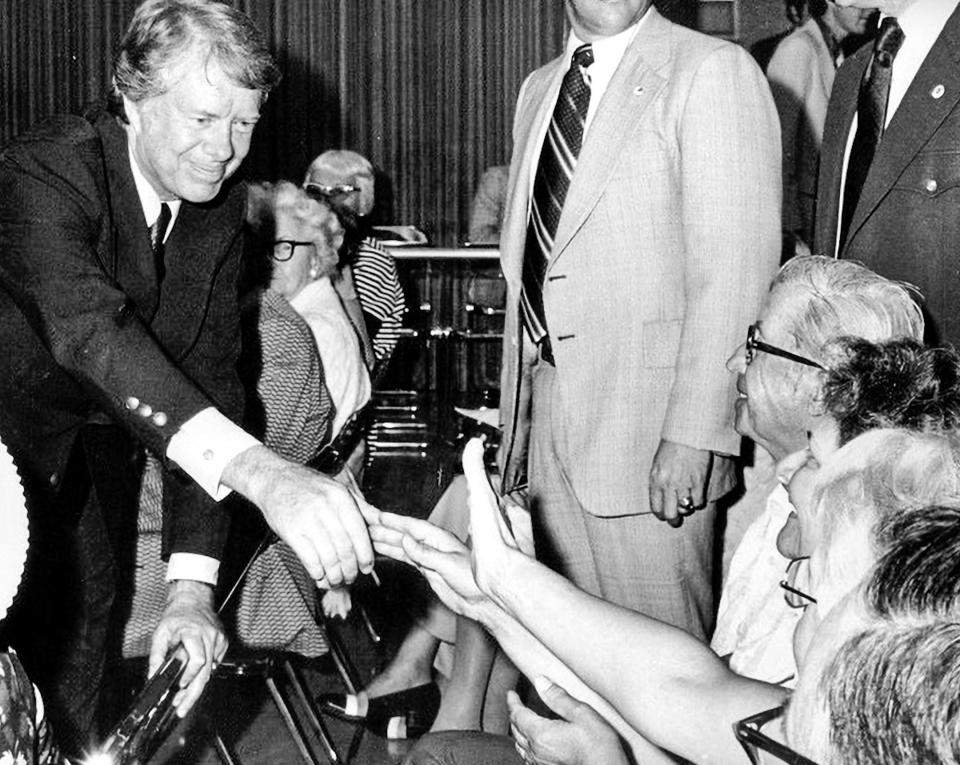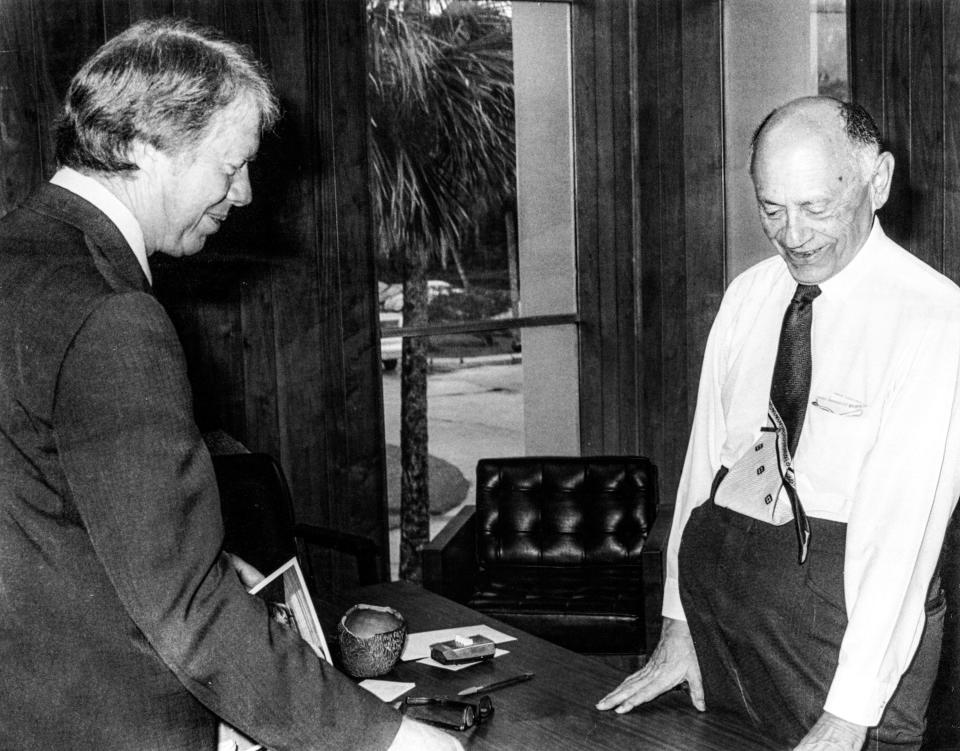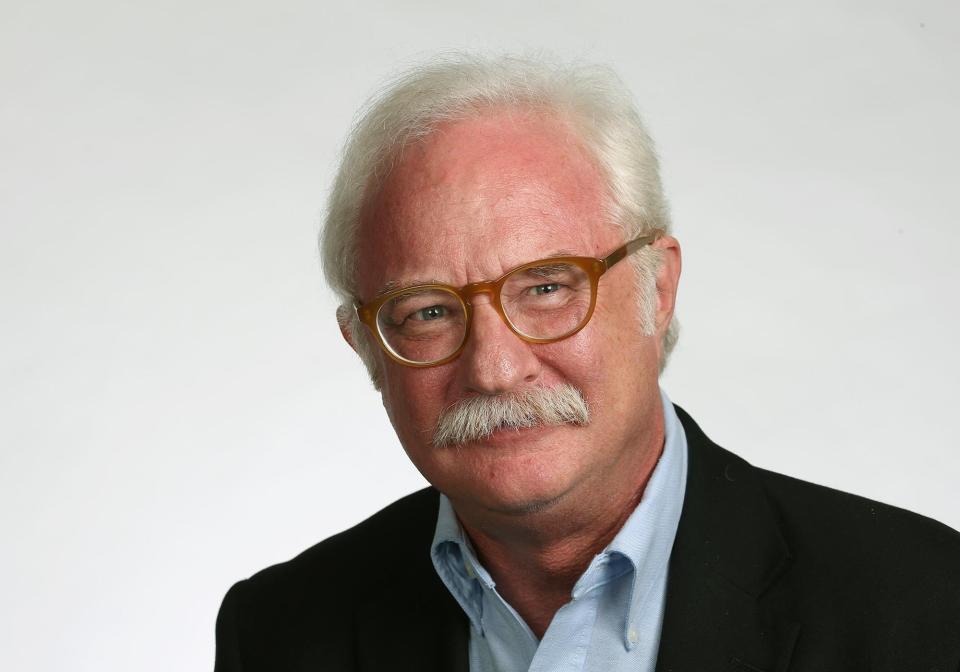Mark Lane: The year Jimmy Carter shook up Florida politics
- Oops!Something went wrong.Please try again later.
- Oops!Something went wrong.Please try again later.
- Oops!Something went wrong.Please try again later.
As close-of-life appreciations are being written for Jimmy Carter, it's worth remembering how his breakout in Florida propelled him to the Democratic nomination and the presidency. And how that changed state and Southern politics.
In the leadup to the 1976 Florida presidential primary, the smart money was on George Wallace. There were a dozen Democrats on the Florida ballot plus the option of "no preference." It was Wallace versus everyone else. And the former segregationist Alabama governor could boast big-name supporters, not the least of which was his state campaign chairman, NASCAR founder Bill France.
Running as a third-party candidate back in 1968, Wallace had garnered 29% of the Florida popular vote and won every North Florida county except Alachua and including Flagler County. In 1972, he had swept the state's Democratic presidential primary with 42% of the vote. Politically, Florida could reliably be counted on as part of the Solid South.

More:Jimmy Carter's NASCAR fanhood led to White House party, where Willie Nelson DIDN'T smoke
That a one-term governor (Georgia's constitution didn't allow governors successive terms) was in this candidate scrum hardly seemed a factor. "No preference" would likely come in ahead of him.
More:Former President Jimmy Carter's Sunday school lesson offered wisdom, bucket-list memory
Yet Carter's Florida win in March 1976 would mark a big shift in Florida, Southern and national politics.
Carter had been part of a wave of moderate, reform-minded "New South" governors. Much like Florida Gov. Reubin Askew, with whom he had frosty relations. Carter had succeeded buffoonish arch-segregationist Lester Maddox as governor and announced a new course in his first minutes in office, startling his audience at his 1971 inaugural speech with the declaration that "the time for racial discrimination is over." A line that sounds like an easy bromide now but at the time caused intra-party consternation.
Sure, this was a guy who performed radical surgery on the state organizational chart, reformed the Georgia State Highway Board and outmaneuvered a score of good ol' boy members of the Georgia Legislative Assembly, but does that add up to an argument for running the planet's preeminent superpower? He wasn't even that popular a governor.
But as with most things Carter did, there was a detailed plan written and disciplined follow-through started while his opponents were still making up their minds. In 1975, Carter was a regular Florida visitor, making 24 sweeps around the state, focusing on small-group gatherings as though he were running for mayor rather than president.
In a typical campaign swing through the Daytona Beach area that October, Carter spoke to black students at Bethune-Cookman College, talked up the virtues of zero-based budgeting to the Rotarians in Daytona Beach Shores, lunched with local movers and shakers at the Civic League, and dropped by The News-Journal building where he and his wife, Rosalynn, charmed editors and editorial writers, who gave him early support on the opinion page despite their wish that Gov. Askew had run for president instead.

Except for Wallace, the rest of the pack stayed away from Florida. The calculation seemed to be that Wallace's Florida win would either damage or knock Carter out of the race, then they'd take on Wallace. A reasonable enough plan.
But when the votes were tallied, the results were startling. Carter won 34% of the vote. Wallace came in second with 31%. Henry "Scoop" Jackson won 24%. "No preference" was fourth place with 3%, and nine other candidates claimed low single digits.
And Carter carried urban and coastal counties by more impressive margins. "Volusia likes Carter 2-1 over Wallace," was the next-day headline in The Daytona Beach Morning Journal.
"George Wallace has lost his Southern base of support and is finished as a contender for the Democratic presidential nomination," News-Journal political columnist Ray Reuster pronounced the next day. Wallace would later drop out of the race after losing North Carolina by nearly 20 points.
Carter's Florida win marked a sharp break in the Southern Democratic party from its racist, segregationist past. It proved something had shifted. It relegated the Wallace rallies with bands playing "Dixie" and Confederate battle flags flying to a past we'd rather not talk about. Florida politics was always Southern with a difference. Now that difference was noticeably widening.
By contrast, the Carter campaign appealed to voters' better instincts. Something that seems pretty foreign now. To the things we hold in common rather than what divides us. To our aspirations rather than our grievances.
"We need a government as good as its people" was one of his applause lines. This flattered voters. (We're better than the terrible people we keep electing.) And it also challenged voters. (Maybe we shouldn't be voting our prejudices and putting terrible people in office.)
This all sounds very quaint now. Which is part of why Carter will be missed.
Mark Lane is a News-Journal columnist. His email is mlanewrites@gmail.com.

This article originally appeared on The Daytona Beach News-Journal: Mark Lane: The year Jimmy Carter took Volusia County

